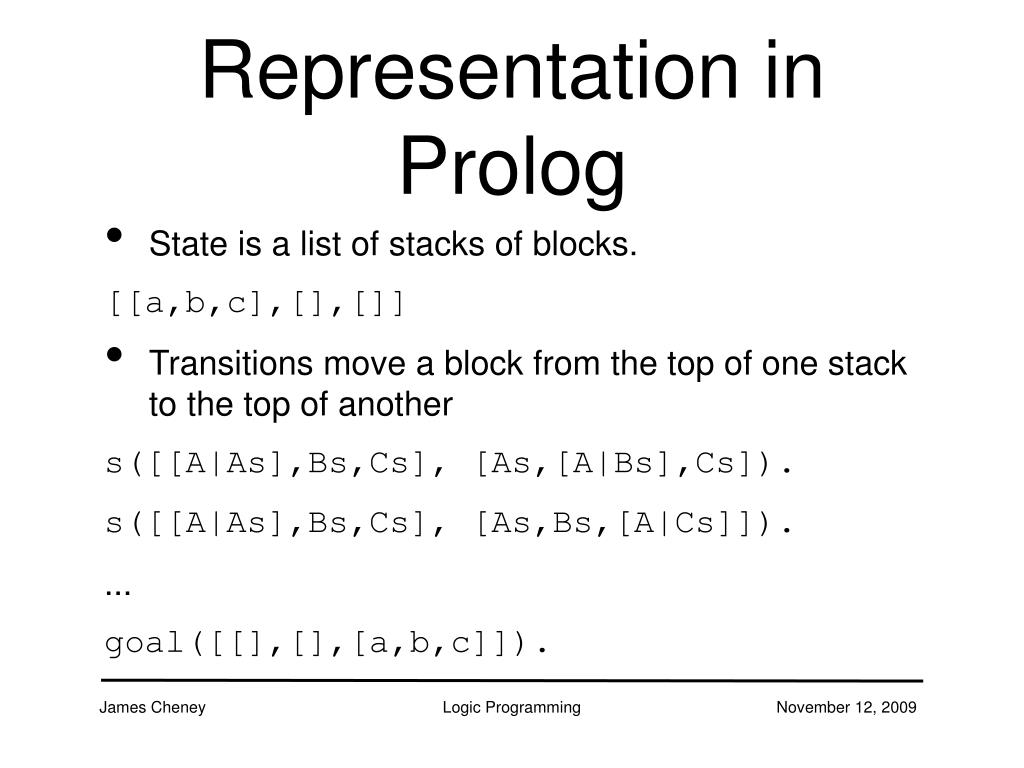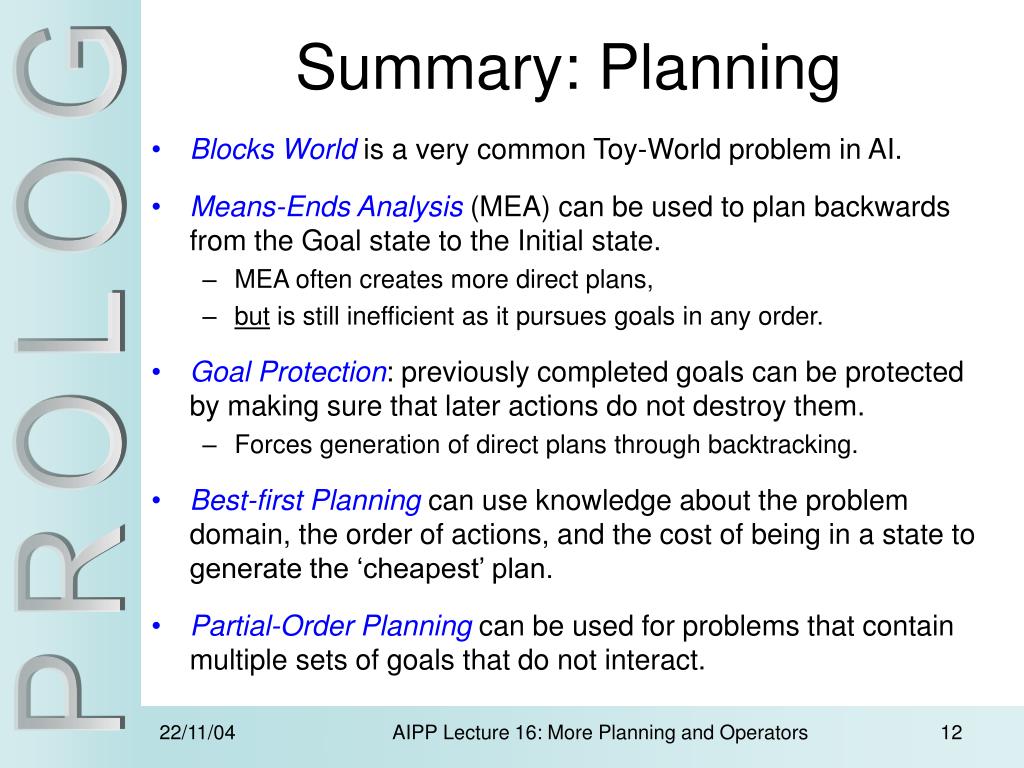

We make use of a stack to hold these goals that need to be fulfilled as well the actions that we need to perform for the same.Īpart from the “Initial State” and the “Goal State”, we maintain a “World State” configuration as well. We keep solving these “goals” and “sub-goals” until we finally arrive at the Initial State. These preconditions in turn have their own set of preconditions, which are required to be satisfied first. We start at the goal state and we try fulfilling the preconditions required to achieve the initial state. Goal Stack Planning is one of the earliest methods in artificial intelligence in which we work backwards from the goal state to the initial state.

Our aim is to change the configuration of the blocks from the Initial State to the Goal State, both of which have been specified in the diagram above. The robot arm can move only one block at a time, and no other block should be stacked on top of the block which is to be moved by the robot arm. We have a robot arm to pick up or put down the blocks. Some blocks may or may not be stacked on other blocks. This is how the problem goes - There is a table on which some blocks are placed. In this medium article, we will take look at the Blocks World Problem and implement Goal Stack Planning to solve the same. Note that only nodes having the least value of cost function are expanded.Blocks World Problem - Initial State and Goal State for this article The below diagram shows the path followed by the above algorithm to reach the final configuration from the given initial configuration of the 8-Puzzle. The found node is deleted from the list of Find a live node with least estimated cost X->parent = E // Pointer for path to root Initialize the list of live nodes to be empty Helps in tracing path when answer is found * Implement list of live nodes as a min-heap */ * Add(x) adds x to the list of live nodes * Least() finds a live node with least c(x), deletes * LCSearch uses Least() and Add() to maintain the list Moves to transform state x to a goal stateĪn algorithm is available for getting an approximation of h(x) which is an unknown value.Ĭomplete Algorithm: /* Algorithm LCSearch uses c(x) to find an answer node

H(x) is the number of non-blank tiles not in Keeping that in mind, we define a cost function for the 8-puzzle algorithm as below: c(x) = f(x) + h(x) whereį(x) is the length of the path from root to x We assume that moving one tile in any direction will have a 1 unit cost. The ideal Cost function for an 8-puzzle Algorithm : H(X) = cost of reaching an answer node from X. The cost function is defined as C(X) = g(X) + h(X) where The next E-node is the one with the least cost. The cost function is useful for determining the next E-node. All children of a dead node have already been expanded.Įach node X in the search tree is associated with a cost. Dead node is a generated node that is not to be expanded or explored any further. In other words, an E-node is a node currently being expanded.ģ. E-node is a live node whose children are currently being explored.

Live node is a node that has been generated but whose children have not yet been generated.Ģ. There are basically three types of nodes involved in Branch and Boundġ. It is similar to the backtracking technique but uses a BFS-like search. The search for an answer node can often be speeded by using an “intelligent” ranking function, also called an approximate cost function to avoid searching in sub-trees that do not contain an answer node. But no matter what the initial state is, the algorithm attempts the same sequence of moves like DFS. This always finds a goal state nearest to the root. We can perform a Breadth-first search on the state space tree. An answer node may never be found in this approach. The search of state-space tree follows the leftmost path from the root regardless of the initial state. In this solution, successive moves can take us away from the goal rather than bringing us closer.


 0 kommentar(er)
0 kommentar(er)
